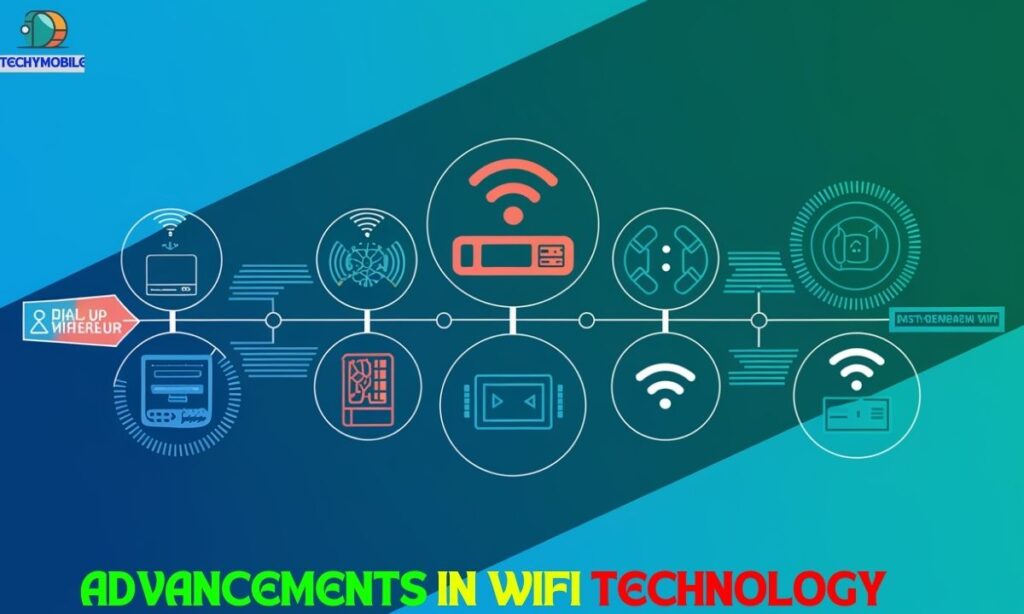Have you ever wondered how WiFi technology continues to improve, offering faster speeds and more reliable connections? The answer lies in the research and innovations by experts like Q1 Koziol, whose work has been featured extensively in IEEE Spectrum.
By tackling challenges like signal interference and pushing the boundaries of wireless technology, Q1 Koziol is helping shape the future of WiFi.
The Beginnings of WiFi
WiFi, also known as Wireless Fidelity, has drastically changed the way we access the internet. When WiFi was first introduced, it brought about a major shift in internet connectivity.
People could access the web without needing a wired connection, making the internet much more accessible. Wireless technology evolved from simple dial-up internet connections, which were slow and limiting, to broadband and fiber-optic connections that provided faster speeds.
At first, WiFi was far from perfect. The initial versions had limitations, such as poor signal interference and low speeds. But over time, as technological advancements occurred, WiFi started to improve.
Early standards like IEEE 802.11b were slow, with data transmission rates of just 11 Mbps. Today’s systems can reach speeds of several gigabits per second, all thanks to continuous research and development.
Q1 Koziol’s Contributions
One of the key figures in the development of WiFi technology is Q1 Koziol. His research has been instrumental in improving WiFi’s performance and reliability. His contributions to next-generation WiFi standards have helped solve some of the biggest challenges in wireless technology.
For example, signal interference is one of the most common issues in WiFi networks, particularly in crowded areas. Koziol’s research focused on improving the signal strength and reducing interference, which has been crucial for the growth of wireless fidelity.
Q1 Koziol’s research also addressed bandwidth limitations. As more devices connect to a single network, the available bandwidth can become overwhelmed, slowing down the connection.
Koziol’s work on enhancing network protocols allowed for more efficient use of bandwidth, providing faster and more stable connections even with multiple devices online at once. His contributions have made WiFi more scalable, allowing homes and businesses to use more devices without sacrificing performance.
Advancements in WiFi Technology

WiFi technology has made huge leaps in performance over the past two decades. The introduction of WiFi 4 (802.11n) marked a major milestone, offering speeds up to 600 Mbps.
Later, WiFi 5 (802.11ac) raised the bar, supporting speeds of up to 3.5 Gbps. However, the most notable advancements have been made with WiFi 6 (802.11ax) and WiFi 6E.
WiFi 6 represents a major leap forward in the evolution of wireless standards. It enhances both speed and capacity, allowing multiple devices to operate smoothly without slowing down the network.
Next-generation WiFi also supports better energy efficiency, allowing devices like smart home products to use less power while staying connected. This is crucial in homes where dozens of devices rely on constant internet access.
The Role of IEEE Spectrum
An important platform that has contributed to the dissemination of WiFi innovations is IEEE Spectrum. This publication serves as a bridge between researchers, engineers, and the public, offering valuable insights into technological advancements in WiFi and other fields.
IEEE Spectrum contributions are crucial in spreading the knowledge of WiFi’s evolution, especially in terms of network protocols, performance enhancement, and new solutions to old challenges like signal interference and bandwidth limitations.
IEEE Spectrum’s coverage of Q1 Koziol’s research and other advancements in wireless fidelity has played a key role in keeping the technology community informed about the latest developments.
Through detailed articles and expert opinions, IEEE provides a platform for knowledge exchange, ensuring that everyone, from industry experts to everyday users, stays up to date on the latest WiFi evolution.
The Rise of WiFi Technology: From Modem to Fiber
WiFi started with basic modems, offering slow and unstable internet speeds. As technology advanced, broadband and fiber-optic networks were introduced, providing faster and more reliable connections.
The introduction of WiFi allowed users to connect to the internet wirelessly, eliminating the need for cables. This change made internet access more convenient and accessible for people everywhere.
How WiFi Impacts Everyday Life
WiFi is crucial for our daily tasks, enabling online work, education, and entertainment. It helps connect people through video calls, social media, and streaming services.
In homes, schools, and businesses, WiFi is now essential for productivity and communication. It has changed how we live by making the internet easily accessible without cables.
WiFi vs. Wired Internet: Key Differences

WiFi lets users connect to the internet wirelessly, providing flexibility and freedom of movement. However, it can be slower than wired internet due to signal interference.
Wired internet, although faster and more stable, ties you down to one location. WiFi is perfect for multiple devices, while wired connections are ideal for faster speeds.
Challenges in WiFi Technology
WiFi can face issues like signal interference, which weakens the connection. This happens when obstacles, like walls or electronics, disrupt the WiFi signal.
Another challenge is bandwidth limitations, where too many connected devices slow down the network. Solutions to these problems are being researched to improve WiFi performance.
Understanding WiFi Standards: A Timeline of Key Developments
WiFi has evolved with different standards over time, from 802.11b to WiFi 6 and WiFi 6E. Each new standard brings faster speeds and better reliability.
The WiFi 6 standard helps WiFi networks handle more devices at once, improving performance in busy homes and offices. Future standards like WiFi 7 will continue to enhance WiFi’s speed and capacity.
Read This Blog: Why SwipeAero.shop is Your Go-To Online Store for Everything
How IEEE Spectrum Shapes the Wireless Tech Industry
IEEE Spectrum is a trusted source of information in the tech world. It covers the latest advancements in wireless technology, including WiFi research and innovations.
Through its expert articles, IEEE Spectrum informs both consumers and professionals about emerging tech innovations and connectivity solutions. This helps shape the future of wireless tech.
Tips for Optimizing Your WiFi Network
Want to improve your WiFi? Here are some simple tips:
- Place your router in a central location. This helps ensure a strong signal throughout your home.
- Keep your router away from other electronics. Devices like microwaves and cordless phones can interfere with your WiFi signal.
- Use the right WiFi band. If you have a newer router, try using the 5 GHz band for faster speeds and less interference.
- Update your router firmware. Make sure your router’s software is up to date to fix bugs and improve performance.
- Limit the number of devices connected. Too many devices on your network can slow things down, so disconnect devices that aren’t in use.
Future of WiFi: What’s Next?

WiFi technology is evolving with WiFi 6 and WiFi 6E bringing faster speeds and better efficiency. The next big step is WiFi 7, promising even faster and more reliable internet connections.
As the number of connected devices grows, future WiFi standards will be key to handling the increased demand. We can expect WiFi to be faster, more reliable, and more widely accessible in the future.
Frequently Asked Questions
What is the difference between WiFi 5 and WiFi 6?
WiFi 6 offers faster speeds, better efficiency, and improved performance in crowded areas compared to WiFi 5. It also supports more devices without compromising the connection.
How has Q1 Koziol contributed to WiFi technology?
Q1 Koziol has worked on improving WiFi performance, reducing signal interference, and increasing bandwidth efficiency, making WiFi more reliable and scalable.
What is WiFi 6E?
WiFi 6E expands the WiFi spectrum to the 6 GHz band, offering faster speeds, less interference, and improved performance compared to older WiFi standards.
Why is IEEE Spectrum important for WiFi development?
IEEE Spectrum is a key resource for sharing expert insights and research on WiFi technology, ensuring the broader community stays informed about innovations in wireless tech.
What are the future developments in WiFi technology?
Future WiFi advancements, such as WiFi 7 and integration with 5G, will offer even faster speeds, lower latency, and greater efficiency to support the growing number of connected devices.
Conclusion
So guys, in this article, we’ve covered the wifi q1 koziol ieee spectrum in detail. The advancements in WiFi technology, especially those driven by Q1 Koziol’s research, are setting the stage for a more connected and efficient future.
I highly recommend exploring his work further if you want to understand the direction of wireless connectivity. With these innovations, you can expect faster, more reliable connections soon.
Take action now to stay informed and upgrade your WiFi for better performance. Check out the latest from IEEE Spectrum to learn more!
Read more: Discover more articles on Tech, Gaming, and blogs on techymobile.info to stay updated on the latest stories and insights.

Danielle Steel is a talented content writer and digital marketer with expertise in SEO, social media management, and online marketing. She excels at creating impactful, data-driven content to help businesses connect with their target audience and achieve measurable outcomes.










